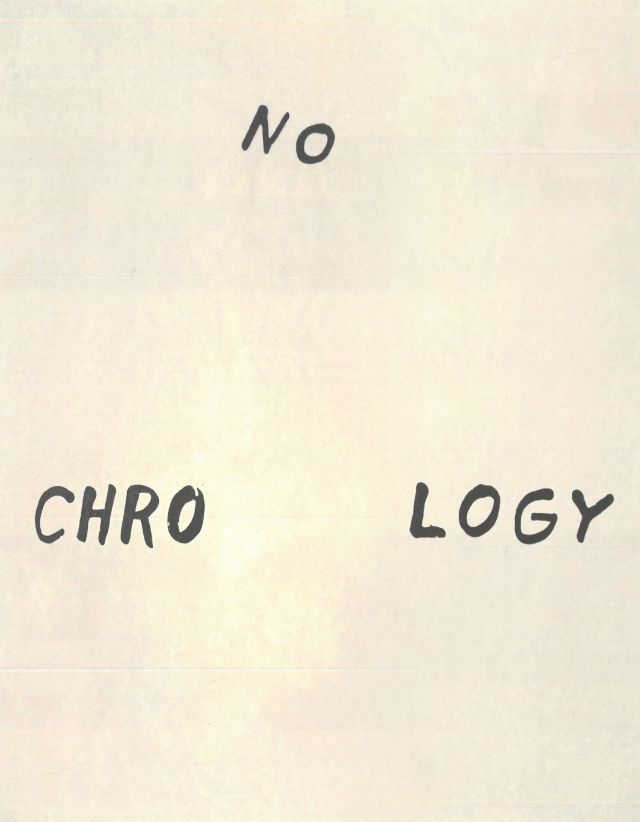Mail Art Chro-No-Logy
introduction
A Mail Art chronology based on the collection of Artpool has been developed since 2015[1], with its main inspiration and starting point being György Galántai’s decades-long engagement with correspondence art as well as the mail art projects he organised at Artpool.
Its direct predecessor was “The Chronology of Hungarian Correspondence Art and Mail Art”, which György Galántai compiled for the publication accompanying the exhibition “Mail Art – Eastern Europe in the International Network” held in 1998 at the Műcsarnok, presenting a rich selection of Artpool’s material. Foreshadowing the current chronology to some extent, he wrote the following in the introduction to his work: “I believe that many chronologies will be created from different perspectives, which can be linked together through the appropriate documents.”

The name Mail Art Chro-No-Logy – in this form – was inspired by Ray Johnson[2] and we even linked the starting year of the chronology to the foundation of the New York Correspondance School (NYCS) because Galántai’s connection with Ray Johnson was of key importance to both himself and Artpool.
To support a deeper understanding of the chronology and to encourage further research, we are publishing a list of major Mail Art magazines as well as several texts of documentary value on Mail Art and its narrower and broader contexts.
This work draws on the chronology of international Mail Art exhibitions from 1970 onwards[3], published by John Held Jr. in 1985, and on the Lomholt Mail Art Archive, launched by Niels Lomholt in 2014 and still operating in a clearly structured and highly searchable format.
Vittore Baroni launched the Move Your Archives (M.Y.A. 2016) project for the year 2016, and it received considerable attention. Numerous former and current participants shared notable items from their archives with colleagues on various platforms. We felt it important that Artpool also announce the chronology of its own making in connection with this project, in the hope that it will become a useful source for artists and researchers interested in the field.
We would like to ask all our visitors to send us any documents missing from our chronology (and archive) if they are in a position to do so.
We know of numerous past projects that we have so far omitted because we had no documentation regarding their actual realisation other than a single reference or call for participation.
A questionnaire was prepared in 2024 for those who have participated in the Eternal Networks in any way. Completing the questionnaire greatly supports further research related to our Mail Art chronology, helps clarify information and contributes to gathering missing documents.
In recent years, we have initiated contact with several artists who have supported our work by contributing documents. We would like to express our thanks to Vittore Baroni, Paulo Bruscky, Leonhard Frank Duch, Luc Fierens, Peter Haining (curator of the Pete Horobin DATA project), John Held Jr., Alexander Hirka, Peter Küstermann, Emilio Morandi, Larry Rippel, Herbert Rodriguez, Gábor Tóth, Chuck Welch and others.
Viktor Kotun, Budapest, 2016-2024.
________________
[1] Concept: György Galántai, Júlia Klaniczay, Viktor Kotun. Web design: György Galántai. Web editing: Viktor Kotun, Márton Kristóf. Research, chronology development: Viktor Kotun.
[2] Ray Johnson: Untitled (CHRO NO LOGY), n.d., ink on paper, 29.7 x 21 cm, Richard L. Feigen & Co, New York, reproduction found in a book available at Artpool’s archives (Robinson, Julia – Christian Xatrec (eds): + - 1961, Museo Nacional Centro de Arte Reina Sofía, Madrid, 2013, p. 246).
[3] International Artist Cooperation: Mail Art Shows, 1970-1985, Dallas Public Library, Dallas, Texas, USA, 1986.
